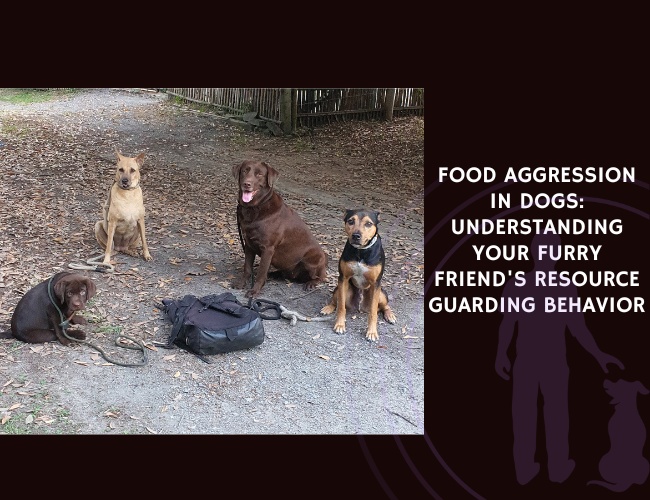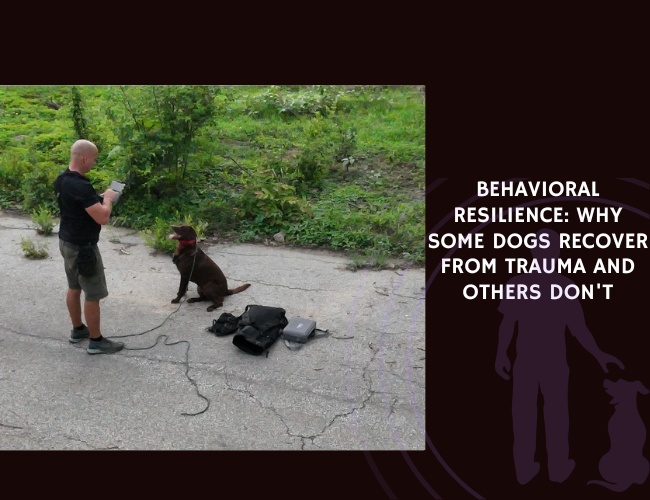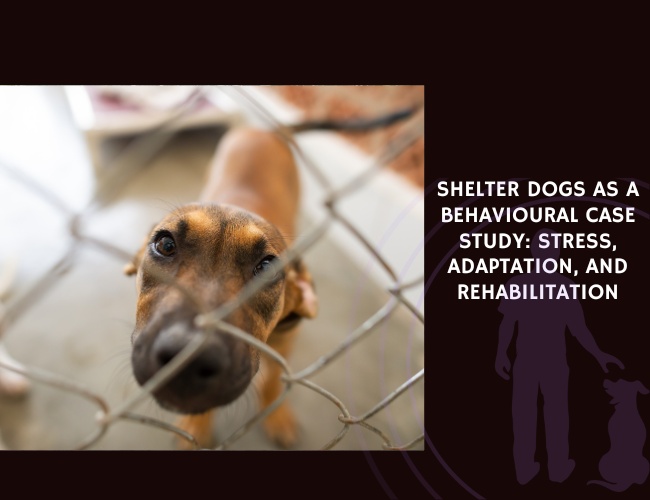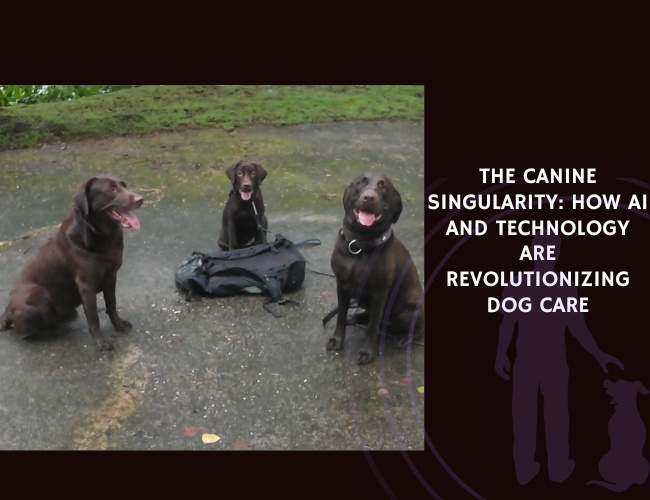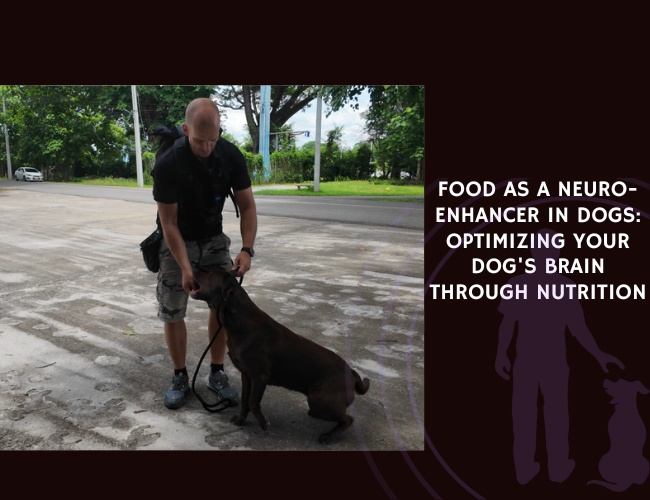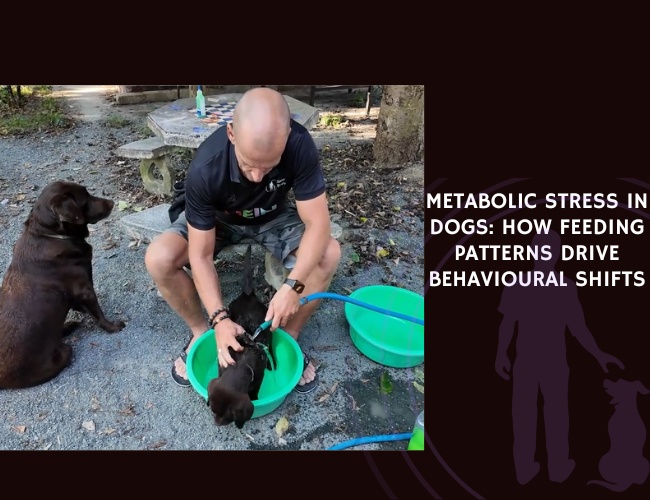Introduction
Picture this: your beloved canine companion, usually so gentle and affectionate, suddenly transforms into a different dog when food is involved. That low growl when you approach their bowl, the stiff body posture, or perhaps even a snap – these behaviors can be both concerning and confusing for devoted pet parents. You’re not alone in this experience, and understanding food aggression is the first step toward creating a safer, more trusting relationship with your four-legged friend.
Food aggression, a form of resource guarding deeply rooted in canine evolution, affects countless households worldwide. While this behavior served our dogs’ wild ancestors well in their struggle for survival, it can create challenging and potentially dangerous situations in our modern homes. The good news? With patience, understanding, and the right approach, food aggression can be successfully managed and often completely resolved.
Let’s explore this complex behavior together, diving deep into the science, psychology, and practical solutions that will help you and your furry companion move past this challenge. Whether you’re dealing with a new rescue who guards their meals or a long-time family member who’s developed this behavior, this guide will provide you with the knowledge and tools you need. 🐾
What Is Food Aggression? Understanding the Roots of Resource Guarding
The Evolutionary Blueprint
Food aggression, technically known as food-related resource guarding, represents your dog’s attempt to maintain control over valuable resources – in this case, their meals or edible treats. This behavior isn’t simply “bad manners” or defiance; it’s a deeply ingrained survival mechanism that traces back to your pup’s wild ancestors.
In the world of wild canids, securing and protecting food resources meant the difference between survival and starvation. African painted dogs, for instance, demonstrate fascinating negotiation strategies around food sharing, ranging from appeasement behaviors to calculated harassment techniques. These wild cousins of our domestic dogs use complex social signals – lowered postures, specific vocalizations, and body positioning – to navigate the delicate politics of group feeding. What we see as “aggression” in our homes is actually part of an ancient, sophisticated communication system.
Did you know that even the most pampered pooch carries these evolutionary instructions in their DNA? This behavioral blueprint helped their ancestors thrive in environments where the next meal was never guaranteed. Understanding this origin story helps us approach food aggression with empathy rather than frustration.
When Natural Becomes Problematic
While resource guarding served a vital function in the wild, its expression in our living rooms and kitchens presents unique challenges. In domestic settings, where kibble flows freely and treats are abundant, these protective behaviors can seem puzzling or even alarming. The fascinating disconnect here is that food aggression in household dogs isn’t necessarily linked to actual scarcity or past starvation.
Recent research examining 900 dogs from cruelty cases revealed a surprising truth: underweight or previously starved dogs weren’t more likely to display food aggression than their well-fed counterparts. This finding challenges our assumptions and highlights that food guarding is more complex than simple cause and effect. Your dog’s protective behavior around their bowl isn’t necessarily telling you a story of past trauma – it might simply be their natural programming expressing itself in an environment where it’s no longer adaptive.
The transition from functional survival behavior to problematic household issue occurs when these natural instincts interfere with daily life, create safety concerns, or damage the human-animal bond. Recognizing this distinction helps us approach treatment with realistic expectations and appropriate strategies.
Character & Behavior: The Many Faces of Food Aggression
Understanding Individual Variation
Just as every dog has their unique personality, food aggression manifests differently across individuals. Some dogs might only guard high-value items like meaty bones or special treats, while others protect even their regular kibble with fierce determination. You might notice your normally sweet-natured Golden Retriever becoming tense around their food bowl, or perhaps your rescue Terrier mix displays more intense guarding behaviors.
Individual factors that influence expression include:
- Genetic predisposition and breed characteristics
- Early life experiences and socialization
- Current stress levels and environmental factors
- Overall temperament and confidence levels
- Previous learning experiences around food
Interestingly, research has shown that female dogs tend to display less food and chew item aggression compared to males, though individual variation always trumps general trends. Factors like skull morphology, body size, and even height can influence how aggression manifests – with some studies suggesting behavioral issues may intensify as height decreases across breeds. However, it’s crucial to remember that breed alone doesn’t determine destiny; a Pug (statistically less likely to show aggression) raised in stressful conditions might guard resources, while a traditionally “protective” breed raised with positive experiences might share freely.
The Emotional Landscape
Behind every growl over a food bowl lies a complex emotional state. Food aggression rarely exists in isolation – it often reflects broader anxiety patterns, past experiences, or current stressors in your dog’s life. Dogs experiencing food aggression might be navigating feelings of insecurity, competition anxiety, or generalized stress that manifests most clearly around valuable resources.
The emotional components often include a mixture of fear (that the resource will be taken), anxiety (about potential competition), and frustration (when approached during eating). These emotions create a perfect storm that triggers the defensive behaviors we observe. Understanding this emotional backdrop helps us approach intervention with compassion rather than confrontation.
Social Dynamics and Communication
Your dog’s food aggression is fundamentally a form of communication – they’re telling you, other pets, or anyone who approaches that they need space around their resources. This communication follows a predictable escalation pattern, though some dogs might skip steps depending on their stress level or past experiences.
The language of food guarding typically progresses through several stages. Initially, you might observe subtle tension in your dog’s body, a slight stiffening when you walk past their bowl. This can escalate to more obvious signals like hovering protectively over food, eating faster when approached, or moving the food away. If these signals go unheeded, your dog might progress to growling – a clear verbal warning that deserves respect, not punishment. 🧠
Vocalization & Communication: How Your Dog “Talks” About Food
The Grammar of Growls
When your dog growls over their food bowl, they’re speaking to you in their native language. These vocalizations aren’t random or meaningless – they carry specific contextual and emotional information that we can learn to interpret. A low, rumbling growl might signal mild discomfort with your proximity, while a higher-pitched, more intense growl could indicate escalating stress or fear.
Research shows that humans can often accurately attribute emotions to dog growls based on their acoustic properties and context. The growl you hear during food guarding might sound different from play growls or fear-based growls, carrying its own unique “accent” that communicates resource-protection specifically. Learning to read these vocal cues helps you understand when your dog is simply communicating discomfort versus when they’re approaching their threshold for more serious defensive behavior.
Body Language: The Silent Conversation
While vocalizations grab our attention, the majority of your dog’s communication about food happens through body language. These visual signals often precede any vocal warnings and provide crucial early intervention opportunities.
Early warning signals to watch for:
- Eating speed changes (suddenly gulping food when approached)
- Body positioning (turning away, hunching over the bowl)
- Facial tension (hard eyes, closed mouth, wrinkled muzzle)
- Tail position (stiff, still tail even in typically waggy dogs)
- Ear positioning (pinned back or rotated forward intensely)
- Overall stillness or “freezing” when someone approaches
The subtlety of these early signals means they’re often missed, leading to surprise when a dog “suddenly” snaps or bites. In reality, your dog likely gave multiple warnings that went unnoticed or unheeded. Developing fluency in canine body language transforms you from a confused owner to an informed advocate for your dog’s emotional needs.
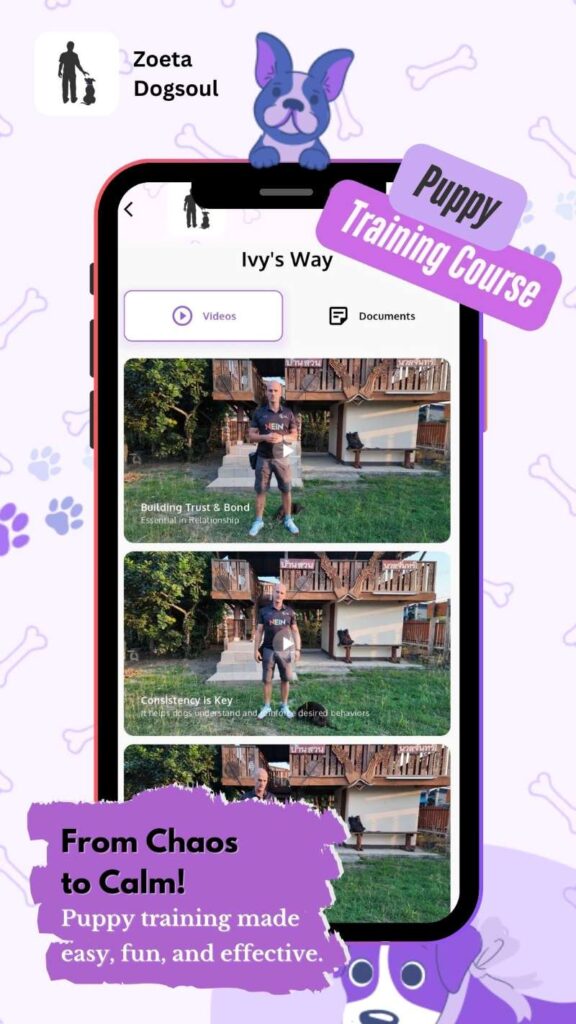
The Escalation Ladder
Understanding how food aggression escalates helps you intervene appropriately and safely. Think of aggressive displays as climbing a ladder – each rung represents an intensification of communication when lower-level signals haven’t achieved the desired result (usually, creating space).
The typical escalation follows this pattern: subtle body tension → obvious stiffening → hovering/guarding posture → eating faster → showing teeth → growling → air snapping → making contact without injury → inhibited bite → uninhibited bite. However, dogs who’ve learned that subtle signals don’t work might skip directly to more intense warnings. Similarly, dogs who’ve been punished for growling might suppress this important warning and move directly to biting – a dangerous situation that reinforces why punishment-based approaches are counterproductive.
Training & Education: Building Trust Around the Food Bowl
The Foundation: Desensitization and Counterconditioning
The gold standard for addressing food aggression involves two interconnected techniques that work together to change your dog’s emotional response to people near their food. These evidence-based approaches form the cornerstone of modern behavior modification.
Desensitization involves gradually exposing your dog to the trigger (you approaching their food) at a level that doesn’t provoke guarding. You might start by simply standing across the room while they eat, gradually decreasing distance over days or weeks as your dog remains relaxed. The key is moving slowly enough that your dog never feels the need to guard – if you see tension, you’ve moved too quickly.
Counterconditioning pairs your approach with something wonderful, changing the emotional association from “threat to my food” to “predictor of good things.” This might involve tossing high-value treats near the bowl as you pass, or adding special toppers to their meal when you approach. Over time, your dog learns that humans near their food bowl means bonus deliciousness, not competition.
These techniques require patience and consistency. You might spend weeks at the same distance before your dog is truly relaxed enough to progress. This isn’t failure – it’s respecting your dog’s emotional journey and building lasting change rather than suppressing symptoms.
Trust-Building Feeding Rituals
Creating positive feeding experiences goes beyond formal training sessions. Every mealtime becomes an opportunity to build trust and positive associations. Consider implementing structured feeding rituals that promote security and reduce anxiety around resources.
The “Treat Fairy” approach: Instead of placing down a full bowl and walking away, start with an empty bowl. Add small portions of food while your dog eats, becoming the magical provider of deliciousness rather than a potential threat. This transforms your presence from something to guard against into something to celebrate.
Hand-feeding exercises: Particularly powerful for building trust, hand-feeding portions of meals creates intimate positive experiences around food. Start with your dog’s regular kibble, graduating to higher-value items as comfort increases. This direct delivery system eliminates the “resource” aspect temporarily while building positive associations with your hands near food.
“Trade-up” games: Teach your dog that giving up resources leads to even better outcomes. Start with low-value items, asking for a “drop” or “give” in exchange for something amazing. Gradually work toward food-related items, always ensuring the trade favors your dog. This builds a gambling mentality where your approach might mean an upgrade! 😄
Environmental Management for Success
While working on behavior modification, managing your dog’s environment prevents rehearsal of guarding behaviors and keeps everyone safe. This isn’t giving up or avoiding the problem – it’s creating conditions for successful learning.
Practical management strategies include:
- Feeding in a separate, quiet room where your dog won’t be disturbed
- Using baby gates to create visual barriers while maintaining supervision
- Scheduling meals when household activity is minimal
- Removing food bowls between meals to prevent ongoing guarding
- Feeding multiple dogs separately to eliminate competition
- Using puzzle feeders or scatter feeding to change the resource dynamic
These management strategies aren’t permanent solutions but rather safety measures that allow you to work on training without pressure or risk. As your dog progresses, you’ll gradually reintegrate normal feeding routines with their new, positive associations intact.
Performance & Activities: Channeling Energy Positively
Mental Enrichment as Prevention
A mentally stimulated dog is often a more relaxed, less resource-focused dog. Incorporating food-dispensing activities that encourage problem-solving can actually reduce food-related anxiety by changing how your dog thinks about meals. Instead of a finite resource to protect, food becomes an engaging activity to enjoy.
Puzzle feeders, snuffle mats, and Kong toys transform mealtime from a two-minute gulp-fest into a 20-minute enrichment session. This extended engagement satisfies natural foraging instincts while reducing the intensity around food as a limited resource. You might notice your food-aggressive dog becoming less intense about their regular bowl when they’re getting mental stimulation through other food-related activities.
The beauty of enrichment feeding is that it addresses multiple needs simultaneously – mental stimulation, physical activity (depending on the toy), and natural behavior expression. A tired, satisfied dog has less emotional energy to invest in guarding behaviors.
Building Confidence Through Training
General obedience training, seemingly unrelated to food aggression, actually builds the confidence and communication skills that reduce resource guarding. A dog who understands clear cues, experiences consistent positive reinforcement, and feels confident in their relationship with you is less likely to feel threatened around resources.
Focus on exercises that build impulse control and emotional regulation. “Leave it,” “wait,” and “settle” cues create a framework for managing arousal around resources. These skills transfer to feeding situations, giving your dog tools to manage their emotions when they feel the urge to guard. The key is practicing these skills in low-stress situations first, building a strong foundation before applying them near food.
Cooperative Care Training
Teaching your dog to be an active participant in their care routines builds trust and reduces defensive behaviors across contexts, including feeding. Cooperative care training involves teaching your dog to willingly participate in handling, grooming, and veterinary procedures through positive reinforcement.
This approach extends naturally to food-related interactions. Teaching your dog to “station” (go to a specific spot) before meals, wait for a release cue, or even help “prepare” their meal by performing tricks creates cooperative routines around feeding. These structured interactions replace the anxiety-driven guarding with purposeful, rewarded behaviors that achieve the same goal – accessing food – through cooperation rather than conflict.
Nutritional Recommendations: The Diet-Behavior Connection
How Nutrition Impacts Behavior
The connection between what your dog eats and how they behave is more profound than many realize. Emerging research reveals that diet doesn’t just fuel your dog’s body – it actively influences their emotional state, stress response, and even their propensity for aggressive behaviors.
Recent studies have shown that diets supplemented with polyphenols and omega-3 fatty acids can modulate gut microbiota and improve anxiety-linked metabolites in dogs. This gut-brain axis means that nutritional interventions might help address the underlying anxiety that often accompanies food aggression. A calmer, less anxious dog is naturally less likely to feel the need to guard resources intensely.
Blood sugar fluctuations can also impact behavior. Diets causing rapid spikes and crashes in glucose levels might contribute to irritability and reactive behaviors. Switching to a high-quality diet with consistent protein levels and complex carbohydrates can help stabilize mood and reduce overall reactivity, potentially decreasing the intensity of guarding behaviors.
Feeding Schedules and Predictability
The when and how of feeding matters as much as the what. Establishing consistent, predictable feeding routines reduces anxiety around food availability and can significantly impact guarding behaviors. Dogs are creatures of habit, and knowing exactly when meals arrive eliminates the uncertainty that can fuel resource protection.
Optimal feeding schedule considerations:
- Consistent timing (same times daily) reduces anticipation anxiety
- Multiple smaller meals might reduce intensity around each feeding
- Avoiding free-feeding prevents constant guarding vigilance
- Post-exercise feeding can capitalize on natural relaxation
- Separate feeding stations for multiple dogs eliminate competition
The predictability principle extends beyond timing. Using the same bowl, location, and routine creates a sense of security and control that reduces the emotional need to guard. Remember, unpredictability is stressful for dogs, and stress intensifies guarding behaviors. 🧡
Special Dietary Considerations
Some dogs with food aggression might have underlying gastrointestinal issues that contribute to their behavior. Chronic digestive discomfort, food sensitivities, or conditions like inflammatory bowel disease can increase overall irritability and decrease tolerance for approach during vulnerable moments like eating.
If your dog shows signs of digestive issues alongside food aggression – symptoms like excessive gas, irregular stools, vomiting, or obvious discomfort after eating – a veterinary nutritional consultation is essential. Addressing underlying GI problems through dietary modification might reduce the physical discomfort that exacerbates guarding behaviors.
Consider keeping a food and behavior diary, noting any correlations between specific ingredients and increased guarding intensity. Some dogs become more reactive after eating certain proteins or during digestive upset. This information proves invaluable for both veterinary assessment and behavior modification planning.
Health Concerns: When Medical Issues Fuel Aggression
The Pain Connection
One of the most overlooked contributors to food aggression is physical pain. A dog experiencing chronic discomfort might guard resources more intensely because the vulnerability of eating becomes unbearable when combined with physical distress. This connection between pain and behavior is so significant that veterinary behaviorists now use a “Toolbox approach” to distinguish between purely behavioral issues and pain-related behavioral changes.
Conditions causing oral pain deserve special attention in food-aggressive dogs. Dental disease, fractured teeth, or oral tumors make eating painful, potentially triggering defensive behaviors when someone approaches during this vulnerable, uncomfortable time. Similarly, arthritis affecting the neck or spine can make the lowered head position required for eating painful, increasing irritability around meal times.
The challenge lies in recognizing subtle pain signs, as dogs are masters at hiding discomfort. Watch for changes in eating speed or style, reluctance to eat harder foods, weight loss, or general behavior changes that might indicate underlying pain. A comprehensive veterinary exam, potentially including dental radiographs and orthopedic evaluation, should be part of any food aggression assessment.
Neurological and Endocrine Influences
Beyond pain, various medical conditions can alter brain chemistry and hormone levels in ways that increase aggressive behaviors. Hypothyroidism, for instance, has been linked to increased irritability and aggression in some dogs. The metabolic changes associated with this condition can lower a dog’s threshold for reactive behaviors, making them more likely to guard resources.
Certain neurological conditions can also manifest as increased aggression or decreased impulse control. While rare, brain tumors, epilepsy, or other neurological issues might present with behavior changes including intensified guarding. This is particularly important to consider if food aggression appears suddenly in an adult dog with no previous history of resource guarding.
The diagnostic journey for these conditions might include blood work to assess thyroid function, cortisol levels, and other hormonal markers. In some cases, advanced imaging like MRI might be recommended if neurological causes are suspected. While these medical causes are less common than behavioral ones, ruling them out is crucial for appropriate treatment planning.
Age-Related Changes
Senior dogs might develop or intensify food aggression due to age-related changes. Cognitive dysfunction syndrome (similar to dementia in humans) can cause confusion, anxiety, and changes in social behavior that manifest as increased guarding. These dogs might forget familiar people, feel more vulnerable, or lose learned inhibitions around resource protection.
Sensory decline also plays a role. A dog with deteriorating vision or hearing might be more easily startled when approached during meals, responding defensively to unexpected presence. What appears as increased aggression might actually be fear response to surprises they can no longer anticipate through diminished senses.
Managing food aggression in senior dogs requires special consideration. The same behavior modification techniques apply, but the pace might be slower, and expectations should account for cognitive limitations. Sometimes, management rather than resolution becomes the goal, focusing on keeping everyone safe while maintaining the senior dog’s quality of life. 🐾

Lifestyle & Environment: Creating a Peaceful Mealtime
Household Dynamics and Multi-Pet Considerations
The social environment surrounding meal times significantly impacts food aggression expression. In multi-dog households, even subtle competition can intensify guarding behaviors. Dogs are incredibly perceptive to social tensions, and the mere presence of another dog during feeding can trigger protective instincts, even if that other dog shows no interest in their food.
Creating separate feeding stations isn’t admitting defeat – it’s acknowledging your dogs’ natural needs for security around resources. Visual barriers between feeding dogs can work wonders. You might use baby gates, feed in different rooms, or create DIY barriers with furniture. The goal is eliminating the perceived need to guard by removing potential competition entirely.
Consider the personalities involved when designing feeding arrangements. A confident, non-guarding dog might inadvertently pressure an insecure, food-aggressive dog simply through their relaxed presence. Conversely, two dogs with guarding tendencies can create an escalating cycle of tension. Understanding these dynamics helps you create an environment supporting success for all pets involved.
Children and Food Aggression
The combination of children and food-aggressive dogs requires special attention and proactive management. Children’s unpredictable movements, inability to read warning signals, and natural tendency to approach dogs during meals creates a particularly risky situation. Statistics show that children are often bitten by dogs with no previous history of biting children, highlighting the importance of prevention over reaction.
Essential safety protocols include:
- Never allowing children to approach dogs during meals
- Teaching children to respect dogs’ eating space completely
- Supervising all child-dog interactions, especially around food
- Creating physical barriers during meal times when children are present
- Educating children about dog body language and warning signs
- Establishing clear rules that children never take items from dogs
Beyond safety rules, involve children (age-appropriately) in positive food-related activities with the dog under close supervision. They might help prepare puzzle feeders, toss treats from a distance, or participate in training sessions. This builds positive associations while maintaining safety through structure and supervision.
Environmental Stress Factors
Your dog’s overall stress level directly impacts their resource guarding intensity. Environmental factors seemingly unrelated to feeding can significantly influence food aggression expression. Recent research showed that fear-related and aggressive behaviors increased in dogs during and after COVID-19 lockdowns, demonstrating how environmental changes impact behavior.
Common household stressors that might intensify food aggression include construction noise, schedule changes, new household members (human or animal), moving homes, or even rearranged furniture. Some dogs are particularly sensitive to environmental changes, showing increased guarding during stressful periods even if their food aggression is normally well-managed.
Creating a calm, predictable environment supports behavior modification efforts. This might mean using white noise during meals to mask stressful sounds, maintaining consistent routines despite household changes, or providing extra mental enrichment during stressful periods. Remember, addressing food aggression isn’t just about the moment of feeding – it’s about your dog’s overall emotional well-being.
Senior Care: Adapting Strategies for Aging Dogs
Adjusting Expectations and Approaches
When food aggression develops or worsens in senior dogs, our approach must account for the unique challenges of aging. Cognitive dysfunction, sensory decline, and chronic pain all influence how we address resource guarding in older dogs. The same principles apply, but the application requires patience, creativity, and adjusted expectations.
Behavior modification in senior dogs often progresses more slowly than in younger dogs. Cognitive changes might mean your senior dog struggles to form new associations or remember training from day to day. This isn’t failure – it’s biology. Celebrate small victories and focus on management strategies that keep everyone safe while maintaining your senior dog’s dignity and quality of life.
Consider that some senior dogs develop food aggression as a result of feeling vulnerable. Arthritis might make them less mobile and unable to move away from perceived threats. Vision or hearing loss might make them feel constantly surprised. Addressing these underlying vulnerabilities through environmental modification – non-slip surfaces, predictable approach patterns, verbal announcements before visual presence – can reduce defensive behaviors.
Medical Management and Comfort
Pain management becomes increasingly important in senior dogs with food aggression. Working with your veterinarian to develop a comprehensive pain management plan might include medications, supplements, physical therapy, or alternative treatments like acupuncture. A comfortable dog is naturally less defensive and more tolerant of approach during vulnerable moments.
Nutritional modifications for senior dogs can also impact behavior. Senior formulas with joint support supplements, easily digestible proteins, and appropriate calorie levels for decreased activity can improve overall comfort and well-being. Some seniors benefit from raised feeders that reduce neck strain, or puzzle feeders that slow eating without requiring difficult manipulation.
Regular veterinary check-ups become even more crucial for senior dogs with behavior concerns. Blood work might reveal metabolic changes affecting behavior, while physical exams can identify painful conditions requiring treatment. Think of these visits as preventive behavior care as much as medical care.
Quality of Life Considerations
Sometimes, managing rather than resolving food aggression becomes the appropriate goal for senior dogs. If cognitive dysfunction prevents learning new associations, or if the stress of behavior modification outweighs benefits in a dog with limited time remaining, management strategies that ensure safety while preserving quality of life take priority.
This might mean accepting separate feeding arrangements as permanent, using baby gates to create safe zones, or simply respecting your senior dog’s need for space during meals. There’s no shame in choosing management over intensive behavior modification when it serves your senior dog’s best interests. The goal shifts from “fixing” the behavior to ensuring your dog’s remaining time is comfortable, dignified, and as stress-free as possible. 🧠
Prevention Strategies: Stopping Food Aggression Before It Starts
Puppy Protocols for Prevention
Prevention truly is the best medicine when it comes to food aggression. Puppies arrive as blank slates regarding human interaction around food, making early experiences crucial for shaping lifelong attitudes about resource sharing. The socialization window (roughly 3-14 weeks) offers a golden opportunity to create positive associations that prevent guarding behaviors from developing.
Start by making yourself the provider of all good things. Hand-feed portions of your puppy’s meals, turning yourself into a food dispenser rather than competitor. Practice approaching your puppy’s bowl and adding special treats, teaching them that human approach means bonus deliciousness arrives. These early exercises build a foundation of trust and positive association that can last a lifetime.
Introduce controlled “interruptions” during puppy meals. Gently pet your puppy while they eat, pick up their bowl to add more food, and practice basic cues like “sit” or “wait” before allowing them to resume eating. Keep these interactions positive and rewarding. You’re teaching your puppy that human involvement in their meals is normal, safe, and often beneficial.
Socialization and Resource Sharing
Teaching puppies to share resources goes beyond just food. Early, positive experiences with trading toys, sharing space, and accepting handling during play all contribute to a dog who’s confident and relaxed around resources. The key is ensuring all early experiences with resource exchange are positive and voluntary.
Set up “sharing games” where your puppy learns that giving up one resource leads to accessing another. Trade toys for treats, treats for toys, and gradually work up to food-related items. Always ensure the trade benefits your puppy – they should feel like they’re winning the lottery, not losing resources. This gambling mentality (“what awesome thing will I get if I give this up?”) prevents the development of guarding behaviors.
Supervised playdates with well-socialized adult dogs can teach appropriate resource behavior through modeling. Puppies learn by watching, and seeing calm, confident dogs share resources provides powerful behavioral templates. Choose mentor dogs carefully – they should be patient, non-reactive, and comfortable with puppies’ sometimes inappropriate resource behavior.
Recognizing Early Warning Signs
Even with excellent prevention protocols, some puppies show early signs of resource guarding that require immediate intervention. Catching these behaviors early, before they become established patterns, makes modification much easier and more successful.
Early warning signs in puppies include:
- Eating faster when people approach
- Carrying food or toys away to “private” locations
- Hovering over or covering resources with their body
- Showing tension or stillness when people near their food
- Growling, even playfully, over resources
- Reluctance to drop or release items
If you notice these early signs, don’t panic, but do take action. Intensify your positive association exercises, consult with a certified professional dog trainer or veterinary behaviorist, and avoid any confrontational or punishment-based responses that might escalate the behavior. Early intervention with appropriate techniques can redirect these tendencies before they become serious problems.
Protective. Primal. Manageable.
Food is survival. Growls, stiff postures, and snaps trace back to ancestral instincts where guarding meals meant life or death. What feels alarming at home is rooted in ancient canine programming.
Context makes it problematic. In modern kitchens, this protective reflex disrupts harmony and safety. Without scarcity, guarding becomes maladaptive, straining trust between human and dog.
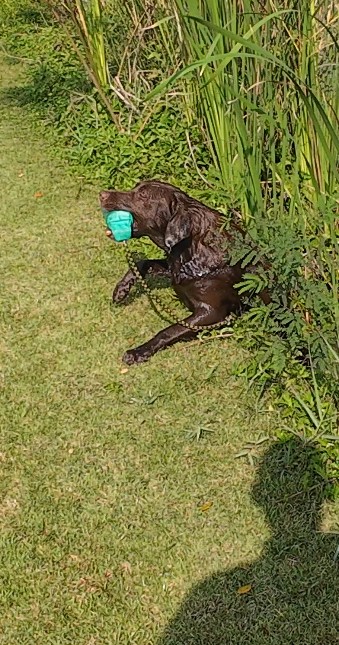
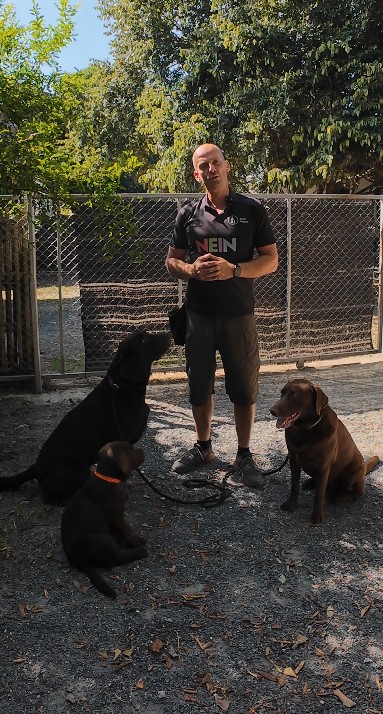
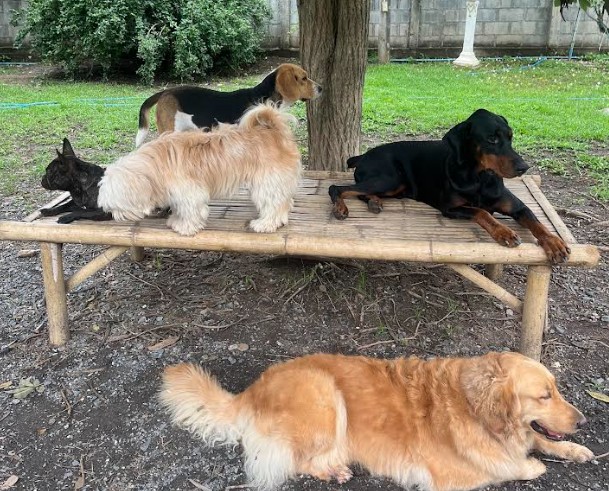
Understanding guides change. Recognising food aggression as communication—not defiance—opens the door to empathy. With patience and strategy, instinct transforms into cooperation and calm.
Your First 30 Days: A Step-by-Step Action Plan
Days 1-7: Assessment and Foundation Setting
The first week is about understanding your dog’s specific triggers and establishing safety protocols. This isn’t the time for heroics – it’s about gathering information and creating a secure environment for everyone involved.
Start by conducting a thorough assessment of your dog’s food aggression. Create a behavior log noting exactly when guarding occurs, what triggers it, and how intense the response is. Does your dog guard only high-value treats or also regular kibble? Is the aggression directed at humans, other pets, or both? Rate each incident on a scale of 1-5, with 1 being mild tension and 5 being actual biting. This baseline data becomes your roadmap for intervention.
Daily Protocol for Week 1:
- Feed your dog in complete isolation (separate room with door closed)
- Observe from outside the room if possible (baby monitor or crack in door)
- Note eating speed, body posture, and any vocalizations
- Establish a consistent feeding schedule (exact same times daily)
- Remove all food items between meals (no leaving bowls down)
- Practice basic obedience commands away from food for 5-10 minutes daily
Management Setup Checklist:
- Install baby gates in strategic locations
- Designate a quiet feeding room away from household traffic
- Purchase a second food bowl for training exercises
- Stock up on high-value treats (cheese, chicken, hot dogs)
- Create a “Do Not Disturb During Meals” sign for family members
- Set up a behavior tracking notebook or app
By week’s end, you should understand your dog’s specific patterns and have a safe management system preventing any guarding incidents. If at any point your dog shows aggression during this assessment week, increase distance and safety measures immediately. Remember, we’re observing, not intervening yet.
Days 8-14: Finding Your Starting Distance
Week two introduces the concept of threshold distance – the magic distance where your dog notices your presence but doesn’t feel threatened enough to guard. This distance varies dramatically between dogs; some might be comfortable with you 3 feet away, others need 20 feet. Finding this sweet spot is crucial for success.
Begin by placing your dog’s regular meal in their designated feeding area. Start from the furthest point possible – perhaps outside the room entirely. Take one small step toward the feeding area and observe your dog’s response. Do they stop eating? Stiffen? Look at you? If you see any sign of discomfort, you’re too close. Back up until your dog returns to relaxed eating.
Daily Distance Work Protocol:
- Morning meal: Find and maintain threshold distance for entire meal (5-10 minutes)
- Stand still at this distance, avoiding direct eye contact
- Practice “boring presence” – read your phone, appear disinterested
- Evening meal: Repeat morning protocol, testing if distance can decrease by 6 inches
- If dog shows ANY tension, return to previous comfortable distance
- End each session by walking away while dog is still eating
Distance Benchmarking Guide:
- Completely relaxed: Soft body, normal eating speed, occasional glancing
- Mild awareness: Slightly faster eating, occasional checking your position
- Threshold reached: Eating stops briefly, body stiffens slightly
- Over threshold: Growling, hovering over bowl, eating frantically
Document your threshold distance daily. Some dogs make rapid progress, others might stay at the same distance all week. Both are normal. The goal is relaxation, not speed. By week two’s end, you should have a consistent threshold distance where your dog tolerates your presence without stress.
Days 15-21: Introducing Counterconditioning
Week three is where the magic happens – we start changing your dog’s emotional response to your approach. This is where those high-value treats become your secret weapon. The goal is simple: your approach predicts amazing things falling from the sky!
Start each meal at your established threshold distance. Now, instead of just standing there, you’ll toss a piece of high-value treat toward (not at) your dog every 30 seconds. The treat should land about a foot away from the bowl – close enough to be noticed but not so close it seems like you’re approaching the food. Use a calm, happy voice saying “bonus!” or “lucky dog!” as you toss.
Daily Counterconditioning Protocol:
- Begin at threshold distance established in week 2
- Toss treat every 30 seconds for first 3 days
- Increase to every 20 seconds for days 4-5 if dog remains relaxed
- Days 6-7: Toss treat, take one small step forward, immediately step back
- Always end on a positive note with a final treat jackpot
- Practice with both meals daily, 5-10 minutes per session
Treat Delivery Techniques:
- Underhand toss with gentle arc (less threatening than overhand)
- Aim for spots that require dog to move slightly away from bowl
- Vary treat types to maintain interest (cheese, then chicken, then hot dog)
- If dog won’t take treats, you’re too close – increase distance
- Some dogs prefer treats rolled on ground versus tossed
Progress Indicators:
- Dog starts looking at you expectantly (anticipation replacing anxiety)
- Tail wagging when you appear at distance
- Pausing eating to watch for incoming treats
- Relaxed body posture throughout feeding
If your dog shows increased tension during week three, you’re moving too fast. Return to week two’s protocol for a few more days. Some dogs need weeks at each stage, and that’s perfectly fine. You’re rewiring deep instincts, not teaching a simple trick.
Days 22-30: Evaluating and Adjusting
The final week of your first month involves careful evaluation and strategic adjustments. By now, you should see some positive changes, even if they’re subtle. This week focuses on consolidating gains and planning next steps.
Start by comparing your current threshold distance to week one’s baseline. Even a one-foot improvement is significant progress! If you’ve made no distance progress but your dog is more relaxed at the original distance, that’s still success. Behavior modification isn’t always linear.
Week 4 Assessment Exercises:
- Test threshold distance at different times of day
- Try protocols with different family members (one at a time)
- Experiment with different treat values to find optimal motivators
- Practice with different food types (kibble vs. wet food)
- Document any setbacks and identify patterns
- Calculate average comfortable distance across all sessions
Advanced Exercises (Only if Dog is Ready):
- “Drive-by” feeding: Walk past at distance, toss treat, keep walking
- “Parallel feeding”: You eat your meal at threshold distance while dog eats
- “Musical meals”: Soft background music during feeding to create positive association
- “Jackpot moments”: Occasionally toss 5-10 treats at once for extra positive impact
Troubleshooting Common Week 4 Problems:
Problem: Progress has plateaued Solution: Take a 2-day break from training, maintain management only, then resume with higher value treats or increased distance
Problem: Dog won’t eat with you present at any distance Solution: Practice being present during non-meal times with treats, building general comfort with your presence
Problem: Inconsistent responses day-to-day Solution: Look for environmental factors (noise, other pets, time of day) that might influence comfort levels
Your 30-Day Progress Tracking Template:
Create a simple chart tracking:
- Date and meal (breakfast/dinner)
- Starting distance from bowl
- Number of treats delivered
- Dog’s overall demeanor (1-5 scale)
- Any notable behaviors
- Environmental factors
- Handler’s emotional state (yes, this matters!)
By day 30, you should have a clear picture of your dog’s progress trajectory and specific triggers. Some dogs are ready to move to more advanced protocols, while others need to repeat the 30-day cycle. Both paths are valid. The key is that you now have a systematic approach and objective data to guide your decisions.

Emergency Protocols & Crisis Management
Immediate Response to Biting Incidents
If your dog bites someone over food, your immediate response can determine both immediate safety and long-term outcomes. First, prioritize medical attention – even seemingly minor bites require proper cleaning and often medical evaluation. Dog mouths contain bacteria that can cause serious infections, and puncture wounds are particularly concerning.
Immediate Bite Response Protocol:
- Secure the dog immediately in a separate room
- Assess the injury without minimizing (adrenaline can mask pain)
- Wash the wound thoroughly with soap and water for 5 minutes
- Apply pressure with clean cloth if bleeding
- Seek medical attention for any puncture wounds or wounds on hands/face
- Document everything: time, circumstances, triggering event
- Take photos of injuries from multiple angles
- Do NOT punish the dog – this increases future risk
Critical First 24 Hours:
- Contact your veterinarian for behavioral referral
- If victim requires medical care, provide vaccination records
- Contact homeowner’s/renter’s insurance company
- Keep dog separated from all triggers
- Begin strict management protocols immediately
- Avoid rehoming decisions in emotional immediate aftermath
Remember, a bite history doesn’t mean your dog is “ruined” or hopeless. Many dogs with bite histories go on to live safe, happy lives with proper management and modification. However, it does mean you need professional help immediately – this is no longer a DIY situation.
When Aggression Suddenly Escalates
Sometimes food aggression intensifies rapidly without obvious cause. This sudden escalation often indicates underlying medical issues, environmental stressors, or inadvertent reinforcement of guarding behaviors. Your response to escalation can either calm or further intensify the situation.
Escalation Warning Signs Requiring Immediate Action:
- Previous warning signals disappear (goes straight to biting)
- Guarding expands to new items or locations
- Aggression intensity increases markedly
- Dog seems generally more anxious or reactive
- Guarding continues even after food is consumed
De-escalation Protocol:
- Immediately increase all management protocols
- Return to feeding in complete isolation
- Eliminate all triggering situations temporarily
- Schedule veterinary exam within 48 hours
- Document all changes in behavior
- Contact professional behaviorist immediately
Never attempt to “work through” sudden escalation on your own. This isn’t the time for training – it’s time for safety and professional assessment. Sudden behavioral changes often have medical causes, from dental pain to neurological issues. 🧠
Managing Emergency Situations
Life happens, and sometimes your carefully structured management plan gets disrupted. Having protocols for unexpected situations prevents panic decisions that could worsen food aggression or compromise safety.
Emergency Pet-Sitter Protocol: Create a detailed instruction sheet including:
- Explicit feeding instructions with safety measures
- Contact information for you and backup emergency contact
- Your veterinarian’s information
- Clear statement that sitter should NOT attempt to take food/bowls
- Permission to leave food and water and not interact if dog seems stressed
- Location of backup supplies if dog won’t allow bowl retrieval
Unexpected Visitor Protocol: When doorbell rings during mealtime:
- Do NOT attempt to quickly grab dog’s bowl
- Close door to dog’s feeding area if possible
- Place “Do Not Enter” sign or block access
- Inform visitor of temporary restriction
- Allow dog to finish meal undisturbed
- Only release dog after bowl is naturally abandoned
Management Failure Protocol: When gates fall, doors open, or children don’t follow rules:
- Use “emergency recall” cue if trained (practice this separately)
- Toss high-value treats away from situation
- Create distraction elsewhere (doorbell, toy in another room)
- Never chase or corner a guarding dog
- If dog has item and won’t release, let them have it unless dangerous
- Reset management system before next meal
Legal Considerations and Liability
Understanding legal implications of dog aggression is crucial for protecting both your dog and your assets. Laws vary significantly by location, but some universal principles apply to food aggression situations.
Documentation Best Practices:
- Keep detailed behavior logs including all incidents
- Document all training efforts and professional consultations
- Maintain veterinary records showing health management
- Photo/video document your management setup
- Keep receipts for training, behavior modification tools
- Record any previous owner disclosures if dog was adopted
Liability Reduction Strategies:
- Ensure homeowner’s/renter’s insurance covers dog-related incidents
- Post clear warnings if you have service workers in home
- Never misrepresent your dog’s behavior history
- Inform veterinarians, groomers, boarding facilities of food aggression
- Consider “Beware of Dog” signs, though these have legal complexities
- Maintain secure containment systems and document their presence
Disclosure Requirements: Many jurisdictions require disclosure of bite history if:
- Rehoming the dog
- Moving to new rental property
- Registering with new veterinarian
- Using boarding or daycare facilities
- Hiring pet-care professionals
Failure to disclose known aggression can result in serious legal consequences if someone is injured. Always err on the side of transparency while emphasizing management strategies you’ve implemented.
Communication Scripts for Professionals
Explaining food aggression to veterinary staff, groomers, or boarding facilities requires clear, honest communication that ensures safety while not dramatizing the situation. How you frame the information affects how professionals interact with your dog.
Veterinary Communication Script: “My dog has food-related resource guarding. He’s fine with handling but needs space during feeding. We’re working with [behaviorist name] and using management protocols. For safety, please remove food bowls before examination and avoid treats during procedures unless I’m present to manage. Here’s what works best for him…”
Groomer Communication Script: “My dog is wonderful for grooming but has food aggression. Please ensure no food or treats are present during grooming. He doesn’t guard tools or spaces, just food items. I’ll feed him after grooming at home. If you typically give treats after grooming, I can provide a special toy instead.”
Boarding Facility Discussion Points:
- Specific feeding requirements (isolation, distance from other dogs)
- What constitutes “food” for your dog (some guard empty bowls)
- Successful management strategies from home
- Emergency contact if issues arise
- Written authorization for specific handling protocols
- Clear pickup/drop-off instructions avoiding meal times
Being upfront about food aggression while emphasizing successful management strategies helps professionals provide safe, appropriate care. Most facilities appreciate honesty and can accommodate special needs when properly informed.
Multi-Dog Household Dynamics: Advanced Management Strategies
The Complexity of Pack Feeding Dynamics
Managing food aggression in a multi-dog household requires understanding that you’re not just dealing with one dog’s behavior – you’re managing an entire social system. Dogs are acutely aware of resource distribution within their group, and even subtle dynamics can trigger or intensify guarding behaviors.
In multi-dog homes, food aggression often follows predictable patterns. The primary guarder might be obvious, but their behavior creates ripple effects throughout the pack. Non-guarding dogs might develop anticipatory stress, eating faster or becoming possessive of their own resources in response to tension. Some dogs who never showed guarding behaviors when solo develop them after witnessing another dog’s resource protection.
The social hierarchy influences but doesn’t determine who guards food. Sometimes the most submissive dog shows the most intense food aggression, using mealtime as their only opportunity to assert control. Conversely, confident dogs might guard simply because they can, not from insecurity but from learned opportunism. Understanding your specific pack dynamics helps predict and prevent problems.
Introducing a New Dog When One Has Food Aggression
Bringing a new dog into a home with an existing food-aggressive dog requires careful orchestration. The introduction period sets patterns that can last the dogs’ entire relationship, making proper management crucial from day one.
Pre-Arrival Preparation:
- Create completely separate feeding stations in different rooms
- Install multiple baby gates to create flexible barriers
- Prepare separate food storage areas to prevent resource tension
- Set up individual water stations to avoid competition
- Purchase identical bowls to prevent preference guarding
- Design rotation schedules for common areas
First Week Integration Protocol: Never allow the dogs to see each other eating during the first week. Feed them in separate rooms with doors closed, using white noise machines or music to mask sounds of eating. This prevents the new dog from learning food-tension patterns and gives your food-aggressive dog time to adjust to the new presence without resource pressure.
Start parallel feeding only after both dogs show complete relaxation in their separate spaces. Place their feeding stations in adjoining rooms with a baby gate between, feeding at the same time but with visual barrier. Gradually, over weeks or months, you can work toward feeding in the same room with significant distance between them – but many multi-dog households successfully maintain separate feeding indefinitely.
Critical Introduction Mistakes to Avoid:
- Feeding from one large communal bowl (never appropriate with food aggression)
- Allowing “natural” pack sorting around resources (dangerous misconception)
- Feeding dogs in crates side-by-side (too close, creates tension)
- Letting new dog “observe” existing dog eating (teaches competitive anxiety)
- Using treats during initial introductions (adds resource competition to social stress)
Managing Three or More Dogs
When you have three or more dogs and one has food aggression, the complexity increases exponentially. You’re not just managing bilateral relationships but multiple interconnected dynamics that can shift daily based on health, stress, or environmental factors.
Feeding Station Design for Multiple Dogs: Create a feeding flow that minimizes cross-paths and competition. Think of it like a restaurant kitchen – efficient flow prevents collisions. A typical successful setup might involve:
- Dog A feeds in master bedroom (door closed)
- Dog B feeds in laundry room (baby gate)
- Dog C feeds in kitchen (opposite corner from others)
- Dog D feeds in home office (door closed)
The key is ensuring no dog must pass another’s feeding area to reach their own. Use timers to maintain consistent feeding duration, releasing all dogs simultaneously to prevent “finisher’s advantage” where fast eaters pressure slow ones.
Rotation Schedules for Large Packs:
- Morning: Dogs A & B eat first shift, Dogs C & D second shift
- Evening: Reverse order to balance “first feeding” privilege
- Treats: Individual training sessions, never group distribution
- Water: Multiple stations available 24/7 to prevent resource tension
- Chews/bones: Only when dogs are completely separated
Managing Different Dietary Needs: When dogs require different foods (prescription diets, senior formulas, weight management), food aggression can intensify due to perceived inequality. The dog with “boring” prescription food might guard more intensely or attempt to access others’ “better” food.
Solutions include:
- Making all foods seem equally valuable through presentation
- Adding safe toppers to prescription foods (with vet approval)
- Feeding prescription-diet dogs first so they don’t observe others’ meals
- Using puzzle feeders to make “boring” food more engaging
- Never allowing dogs to “finish” each other’s meals, even if same food
Preventing and Managing Food Aggression Contagion
Food aggression can spread through a pack like wildfire. A previously non-guarding dog might start displaying resource protection after observing another dog’s successful guarding. This behavioral contagion requires proactive intervention to prevent pack-wide problems.
Early Contagion Signs:
- Previously relaxed dogs eating faster
- Dogs who didn’t guard starting to hover over bowls
- Increased vigilance during meals even in separate rooms
- New tension around treat time or water bowls
- Competition behaviors in non-food contexts
Contagion Prevention Protocol: Immediately isolate the primary food-aggressive dog’s feeding completely – not just physically but also acoustically and visually. Other dogs shouldn’t hear growling or observe tense meal behaviors. Think of food aggression as behaviorally “infectious” and quarantine accordingly.
Reinforce relaxation in non-guarding dogs through separate counterconditioning. While they eat (separately), practice calm presence and reward relaxed behavior. This inoculates them against developing guarding by strengthening positive associations before negative patterns emerge.
Breaking Established Contagion: If multiple dogs have already developed food aggression:
- Return to complete isolation feeding for all dogs
- Work on each dog’s behavior modification individually
- Only reintegrate gradually as each dog shows improvement
- Consider permanent management rather than modification for some
- Accept that some packs function better with permanent separation
Specific Room Layouts and Physical Management
The physical environment significantly impacts food aggression in multi-dog homes. Strategic design can prevent problems before they start and make management easier long-term.
Optimal House Layout Utilization:
- Use vertical space: Feed confident jumpers on raised platforms
- Create visual barriers with furniture placement
- Install Dutch doors for half-height barriers
- Use bathroom spaces for easy-clean feeding areas
- Convert closets to feeding alcoves for small dogs
- Utilize basement/garage for rotation options
DIY Feeding Station Solutions: Build permanent feeding stations that prevent competition:
- Corner feeding booths with three-sided barriers
- Under-counter feeding nooks in kitchen islands
- Converted cabinet spaces with dog-door access
- Outdoor feeding stations for weather-appropriate seasons
- Raised platforms with non-slip surfaces
- PVC pipe frameworks with blanket/sheet barriers
Technology Aids for Multi-Dog Management:
- Microchip-activated feeders ensuring only designated dog accesses food
- Timed automatic feeders reducing human involvement in feeding
- Camera systems for monitoring separated feeding
- Smart gates that can be controlled remotely
- Motion-activated deterrents for boundary enforcement
Pack Psychology and Resource Distribution
Understanding pack psychology helps predict and prevent resource-related conflicts. Dogs don’t think in terms of “fairness” but rather in terms of resource security and social positioning. Your role isn’t to be “pack leader” in the outdated dominance sense, but rather a benevolent resource manager who ensures everyone’s needs are met without competition.
Resource Distribution Strategies:
- Provide 150% resources: More water bowls than dogs, multiple toy options
- Rotate “special” items so no single item becomes too valuable
- Use identical items when possible to prevent preference development
- Distribute resources throughout living space, not clustered
- Maintain predictable resource availability to reduce scarcity mindset
Managing Social Dynamics: Watch for alliance formations where two dogs team up to pressure a third around resources. These dynamics can shift, so regular observation is crucial. Sometimes the solution isn’t addressing the guarding dog but rather supporting the pressured dog through environmental management.
Consider “resource mapping” – documenting where each dog prefers to eat, drink, and rest. Respecting these preferences while maintaining safety can reduce overall pack tension. A dog who gets their preferred feeding spot might guard less intensely than one who feels constantly displaced.
Remember that pack dynamics change with age, health, and life events. The young dog who deferred to seniors might become more assertive as others age. Regular reassessment and adjustment of management strategies ensures continued success as your pack evolves. 🐾
Professional Intervention: When to Seek Expert Help
Recognizing When You Need Support
While many cases of food aggression respond well to dedicated owner intervention, certain situations warrant professional help. Recognizing when you’ve reached the limits of safe, effective DIY behavior modification protects both you and your dog from potentially dangerous situations or inadvertently worsening the problem.
Seek professional help immediately if your dog has bitten or attempted to bite over food, if the aggression is escalating despite your efforts, or if you feel unsafe implementing behavior modification techniques. Similarly, if food aggression extends to multiple contexts or resources, or if there are children in your household, professional guidance becomes essential for safety and success.
Don’t view seeking help as failure – it’s responsible dog ownership. Certified behavior professionals bring expertise, objectivity, and structured protocols that can accelerate progress while ensuring safety. They can also identify subtle factors you might miss and adjust techniques to your specific situation.
Types of Professionals and What They Offer
Understanding the different types of professionals available helps you choose appropriate support for your situation. Each brings unique expertise and approaches to addressing food aggression.
Veterinary Behaviorists are veterinarians with additional specialization in behavior. They can prescribe medications if needed, rule out medical causes, and develop comprehensive treatment plans combining medical and behavioral interventions. Consider a veterinary behaviorist for severe cases, when medical issues are suspected, or if anxiety medications might help your dog succeed with behavior modification.
Certified Dog Behavior Consultants (CDBC, CBCC-KA, CAAB) have extensive education and experience in behavior modification. They develop detailed behavior plans, coach you through implementation, and adjust protocols based on progress. These professionals are ideal for moderate to severe food aggression requiring structured intervention beyond basic training.
Certified Professional Dog Trainers (CPDT-KA, CPDT-KSA) with experience in resource guarding can provide practical training support and help implement behavior modification plans. Look for trainers using force-free, science-based methods who have specific experience with aggression cases.
What to Expect from Professional Help
Professional intervention typically begins with a comprehensive assessment including detailed history-taking, observation (often via video for safety), and development of a customized behavior modification plan. Expect questions about your dog’s entire life history, not just their food aggression, as behavior problems rarely exist in isolation.
Your behavior professional will likely create a written protocol detailing management strategies, behavior modification exercises, and safety protocols. They’ll demonstrate techniques, coach you through implementation, and provide ongoing support as you work through the plan. Progress monitoring and protocol adjustments are normal parts of the process.
Be prepared for homework and commitment. Professional help isn’t a magic quick fix – it’s expert guidance for work you’ll implement daily. Success requires consistency, patience, and following protocols even when progress seems slow. Your professional is your coach and educator, but you’re the one who’ll create change through daily interactions with your dog.
Conclusion: Is Food Aggression Manageable? Your Path Forward
The Journey of Trust and Understanding
As we reach the end of our comprehensive exploration of food aggression, you might feel overwhelmed by the complexity of this behavior. That’s completely normal and actually shows you understand that resource guarding isn’t a simple problem with a quick fix. The good news? Armed with knowledge, patience, and the right approach, food aggression is absolutely manageable, and in many cases, completely resolvable.
The journey from a dog who guards their bowl to one who welcomes your presence during meals isn’t always linear. You’ll experience setbacks, breakthrough moments, and periods where progress seems stalled. This is the nature of behavior modification – it’s not failure, it’s process. Every small step forward, every meal without tension, every successful trade – these all build toward lasting change.
Remember that addressing food aggression is really about building trust. Each positive interaction around food deposits into your “trust account” with your dog. Over time, these deposits accumulate into a wealth of positive associations that override the instinctive need to guard. Your dog learns that you’re not a competitor for resources but rather a provider of abundance and security.
Key Takeaways for Success
Your success in managing food aggression depends on several crucial factors working together. First, consistency is absolutely essential – everyone in your household must follow the same protocols and respect your dog’s need for modified feeding arrangements during the behavior modification process. Mixed messages confuse dogs and can actually intensify guarding behaviors.
Second, patience cannot be overstated as a requirement. Behavior modification happens at your dog’s pace, not yours. Pushing too fast or skipping steps might seem to accelerate progress initially but often results in setbacks that require starting over. Trust the process, celebrate small victories, and remember that lasting change takes time.
Third, safety must always be your priority. No training goal is worth a bite injury. Use management strategies liberally, seek professional help when needed, and never feel embarrassed about taking precautions that keep everyone safe. Baby gates, separate feeding rooms, and professional guidance aren’t signs of failure – they’re tools for success.
Your Action Plan Moving Forward
Now that you understand food aggression comprehensively, it’s time to create your action plan. Start with a honest assessment of your situation. How severe is your dog’s food aggression? Are there safety concerns requiring immediate professional help? What management strategies can you implement today to prevent problems while working on long-term solutions?
Begin with the basics: establish consistent feeding routines, implement management strategies for safety, and start simple counterconditioning exercises at whatever distance your dog remains completely relaxed. Keep a behavior diary noting progress, setbacks, and any patterns you observe. This documentation proves invaluable for tracking progress and adjusting your approach.
Don’t hesitate to seek support, whether from professionals or online communities of others dealing with similar challenges. You’re not alone in this journey, and connecting with others who understand can provide both practical advice and emotional support when things feel difficult.
A Future of Peaceful Mealtimes
Imagine a future where meal times are relaxed, even enjoyable shared experiences with your dog. Where you can walk past their bowl without tension, maybe even add a special treat mid-meal to their delight. This future is possible for most dogs with food aggression, though the path to get there varies for each individual.
Some dogs achieve complete resolution, becoming as relaxed about food as dogs who never guarded. Others maintain manageable levels of resource preference that don’t interfere with daily life. Still others require ongoing management strategies but live happy, fulfilled lives within those parameters. All of these outcomes represent success when achieved safely and humanely.
Your dog’s food aggression doesn’t define them or your relationship. It’s a behavior, not a character flaw, and behaviors can be modified. With understanding, patience, and the right approach, you and your furry friend can move beyond resource guarding toward a relationship built on trust, security, and mutual respect. The journey starts with a single step – and you’ve already taken it by educating yourself. Here’s to peaceful, happy mealtimes in your future! 🧡🐾
Remember: Every dog is unique, and what works for one might need modification for another. This guide provides comprehensive information, but your individual dog’s needs should always be assessed in consultation with qualified professionals when dealing with aggression. Your commitment to understanding and helping your dog through this challenge shows the depth of your bond – and that bond, built on knowledge and trust, is your greatest tool for success.

